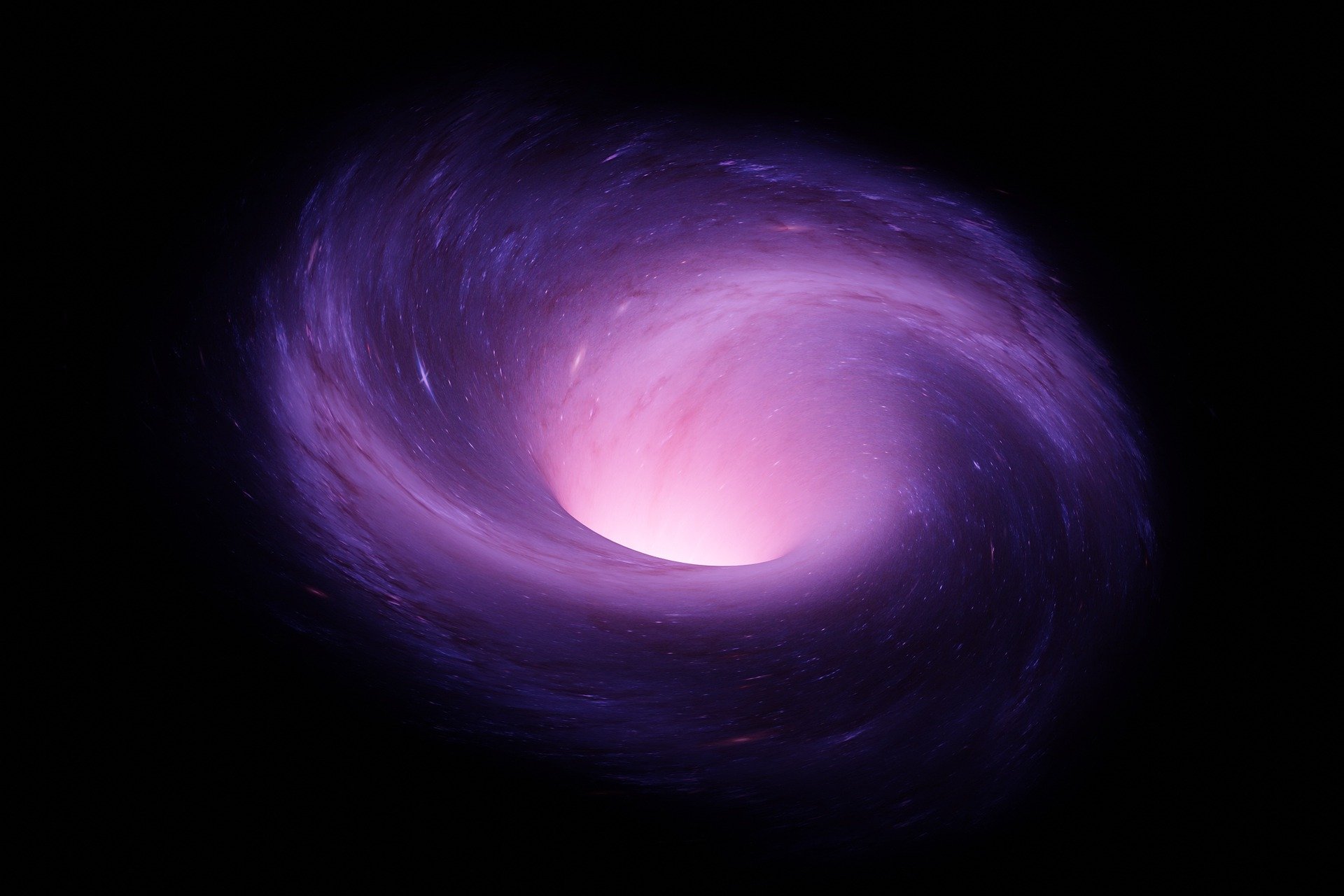Black Holes and their Origin
BLACK HOLES are positions in space that are so concentrated that they form intensive gravity fall. Past a certain area, even a light cannot get away with the mighty pull of a black hole’s gravity. And anything that moves too close (be it star, planet, or spacecraft) will be expanded and compressed like putty in a theoretical process aptly known as spaghettification.
Black holes had remained mysterious until the 20th century. In the year 1916, a German physicist named Karl Schwarzschild using Einstein’s general theory of relativity, evaluated that any mass can become a black hole if they were compressed tightly enough. But it wasn’t until 1971, when theory turned into an actual reality. Astronomers studying the constellations signals discovered the first black hole, CYGNUS X-1.
Black holes are one of the most intriguing things to see in the sphere of cosmology. But every black hole might look similar; however, it is not the same. On the predicament of their size and properties they are classified into 4 different types. So, in this article you will know about every type of black holes which are discovered till now.
Stellar mass Black holes
These are the most commonly discussed black hole and are formed by stellar death. As stars outstretch the ends of their lives, most will dilate, lose their volume, and then they will further cool down to form white dwarfs. They are the largest flaming bodies, which are at least 10-20 times greater than our sun and it is dispersed throughout the universe. It collapses upon itself, whenever a star dies and sometimes it leads to the creation of supernova. This supernova then further blasts its outer layers into the space. If there’s enough mass left behind, gravity at the core can continue to strike it all together into a point of infinite density leading to the formation of a black hole, where not even a light can break out.
There can be billions of these stellar black holes in the Milky Way alone. These are destined to become either super-dense neutron stars or so-called stellar-mass black holes.
In their final phase, a huge amount of stars go out with a bang with massive explosions known as supernovae. Such a burst flings star matter out into space but leaves behind the stellar core. While the star was alive, nuclear fusion established a continual push towards outside for stabilising the inward pull of gravity from the mass of the star. However, there are no longer forces to resist that gravity in the stellar residue of a supernova, so the star core begins to collapse upon itself.
If its mass collapses into an infinitely small spot, then a black hole is born. With the packing of all that bulk into such a tiny point gives black holes their strong gravitational pull. Millions of these stellar-mass black holes may lie low within our own Milky Way galaxy.
Super massive black holes
Most black holes have greater mass than 1000000 suns. Evidence advocates that they exist at the centre of most of the galaxies. The super massive black hole at the center of the Milky Way has been approximated to be about 93 million miles across and 4 million solar masses. Some distant galaxies have super masses as big as 21 billion times mass of the sun.
Super massive black holes are giants when compared to other black holes. They are measured to be millions or billions times more massive than our sun.
Scientists does not consists of much knowledge about their formation or the fact that how they grew to be so big. However, it may be closely related to the formation of the galaxies. Though, we are well aware of the fact that they exist to the center of just about every large galaxy including our own Milky Way galaxy.
Sagittarius A, which is known to be the super massive black hole at the center of the Milky Way has a mass of about four million suns and has a diameter of about the distance between the earth and our sun. Due to the invisibility of the black holes, the only way for the scientists to detect and study them is by observing their effect on nearby matter. This includes accretion disks. A disk of particles is generally formed when gases in dust fall towards a black hole.
Quasars, which is known to be a stream of particles blasts out of super massive black holes.
Intermediate black holes
Astronomers are also doubtful that a class of objects called intermediate-mass black holes exist in the universe, although evidence for them is so far questionable. An intermediate-mass black hole (IMBH) is a class of black hole with mass in the range 102–105 solar masses: notably more than stellar black holes but less than the 105–109 solar mass super massive black holes. Several IMBH candidate objects have been located in our galaxy and others nearby, based on indirect gas cloud velocity and accretion disk spectra observations of various evident.
Intermediate black holes may form when the primeval stars in the universe fall to pieces or when stars or black holes coincide. Though, one such kind of black hole exists only in theory so far.
The intermediate mass black hole is guesstimated to have a mass between 100 and 1000 solar masses. And no single star could ever form such a heavy black hole. The only way astronomers think such black holes could form is for a single black hole to devour lots and lots of material to get up to the required heft, or for individual black holes to combine together. However, both of these scenarios pose problems that astronomers cannot answer right now.
Tod Strohmayer further added by saying that the nature of these objects is one of the most interesting conundrums in high-energy astrophysics.
Miniature black holes
Micro black holes, also known as quantum mechanical black holes or miniature black holes, are hypothetical tiny black holes, for which quantum mechanical effects play an essential role. The notion that black holes may exist are smaller than stellar mass, was introduced by Stephen Hawking in the year 1971. These are theorised to have formed during the period of rapid expansion after the Big Bang, are infinitesimally tiny and are thought to have a mass a little less than that of the Sun. These can be as wide as atomic particle; however, they have the same mass as Mt. Everest. They may have formed soon after the big bang, making them about 13.7 billion years old.
According to Stephen Hawking, these miniature black holes will not be that black after all and that they will vaporize with time by roughly following a black body radiation spectrum. He also said added that the vaporization rate will be inversely proportional to the black hole mass.
On the contrary, astronomical black holes are so huge that their evaporation rate is negligible. Miniature black holes are unimaginably hot and the core of our Sun is at around 15,000,000 degrees Kelvin. In order to get close to the temperature of a mini black hole, you would need to add another 42 zeroes. The incredible temperature means that the miniature black holes of tiny mass would vaporize into the far, colder space around them at almost infinitely faster rate. Their expected lifetime is around one octillionth of a nanosecond. Hence, they pop out of existence again almost as soon as they are created.
Scientists have a lot to learn but they have plenty of time. And with the passage of time, the amount and size of black holes will only rise. And some day, they may be all that’s left to the cosmos.
Conclusion
Therefore, it doesn’t matter what size a black hole has at it’s initial state, as they can grow throughout their lives, slurping gas and dust from any objects that crawl too close. In theory, if anything passes the event horizon, the point at which escape becomes impossible, is destined for spaghettification. And this is due to to a sharp increase in the strength of gravity as you fall into the black hole.
Because black holes consume all light, astronomers can’t mark them straight like they do to various other glittery cosmic objects in the sky. But there are a few keys that discloses the presence of a black hole. For one, a black hole’s intense gravity pulls on any surrounding objects. Black holes are, thus, also considered to be messy eaters, which often deceive their locations. As they sip on the surrounding stars, their massive gravitational and magnetic forces superheat the falling in gas and dust, causing it to let out the radiation.
A boundless amount of black holes are dispersed throughout the universe by constantly warming space and time, modifying the entire galaxies and by endlessly inspiring both scientists and our collected imagination.


